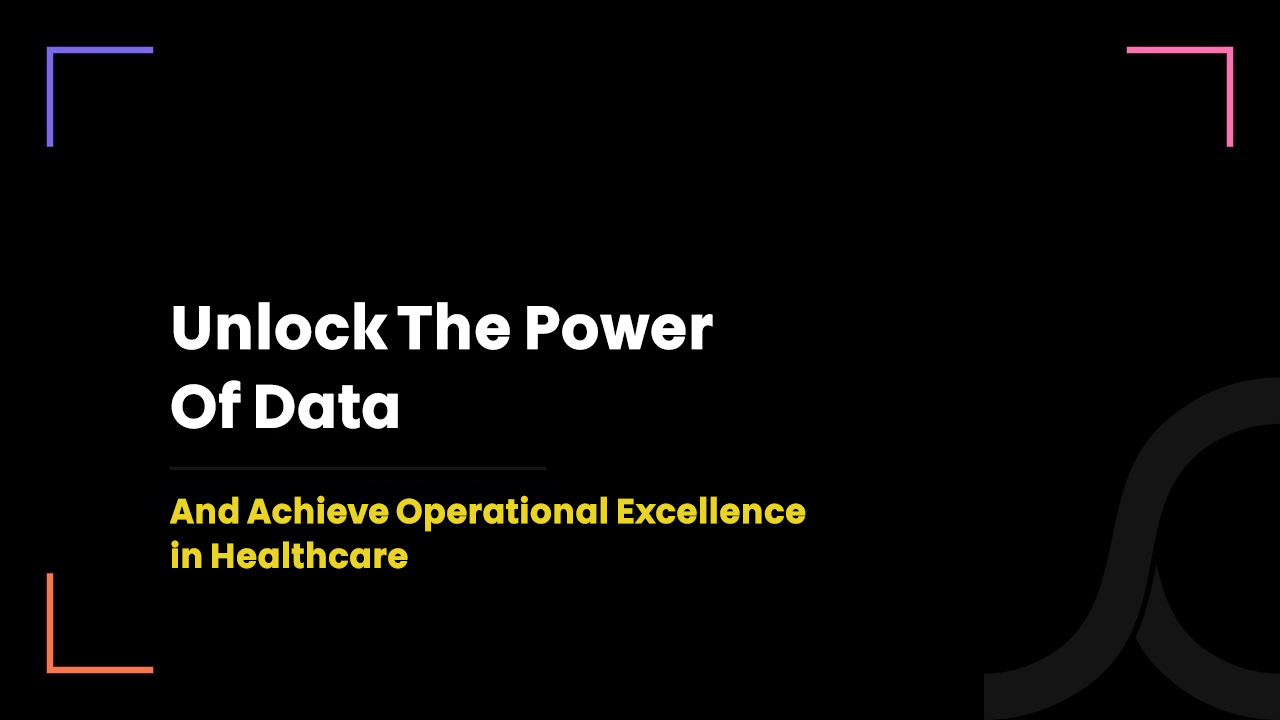Maximize Healthcare Performance with Data Analytics and Key Performance Indicators

2 years ago
In today's rapidly evolving healthcare industry, staying ahead of the competition requires a comprehensive understanding of key performance indicators (KPIs) and the ability to make sense of the data they generate.
This is where healthcare data analytics comes into play.
By harnessing the power of data analysis, healthcare organizations can
- Gain valuable insights
- Make informed decisions
- Drive growth in the competitive & financially challenging market
What is Healthcare Data Analytics?
Healthcare data analytics involves collecting, processing, and analyzing raw data to identify trends and patterns that enable organizations to make informed decisions.
While data analytics is applicable across various industries, healthcare data analytics is unique due to its focus on health-related data, including diagnoses and patient outcomes.
For medical practices, data analytics goes beyond mainstream metrics like sales and consumer demands, incorporating factors such as
- Government grants
- Insurance payments
- Reimbursements
- Compliance measures adherence
Benefits of Healthcare Data Analytics
1. Predictive Analytics
Healthcare organizations can leverage predictive analytics to forecast future trends and outcomes.
By applying machine learning algorithms to patient data, organizations can
- Identify high-risk individuals
- Predict disease progression
- Optimize treatment plans
Predictive analytics can also assist in predicting patient flow and resource utilization, enabling proactive decision-making and resource allocation.
2. Real-time Data Monitoring
Incorporating real-time data monitoring into healthcare data analytics allows organizations to have up-to-date information on key performance indicators.
By integrating data from various sources (such as EHRs, wearable devices, and RPM systems), healthcare providers can monitor patients' health status in real-time, identify anomalies, and intervene promptly.
3. Patient-centered Analytics
Healthcare data analytics can be extended to focus more on patient-centered metrics and outcomes.
Beyond traditional metrics, such as patient satisfaction rates, organizations can delve into
- Patient-reported outcomes
- Quality-of-life measurements
- Patient engagement levels
By incorporating patient-centered analytics, healthcare providers can gain a deeper understanding of the impact of their services on patient well-being and tailor their care accordingly.
4. Continuous Quality Improvement
Healthcare data analytics should be utilized as part of a continuous quality improvement process.
By regularly monitoring and analyzing KPIs, organizations can identify areas for improvement, implement interventions, and evaluate their effectiveness.
The data-driven feedback loop enables healthcare providers to iteratively enhance patient care, operational efficiency, and overall performance.
Essential Healthcare KPIs to Track in 2023
Healthcare data analytics provides valuable insights into operational efficiency, financial growth, patient acquisition and retention, and internal performance.
1. Operational Efficiency
Efficient operations are vital for delivering quality patient care and optimizing resource utilization.
Tracking operational KPIs helps identify bottlenecks in the patient care process, leading to improved efficiency.
Examples of operational KPIs include
- Staff-to-patient ratio
- Average patient wait time
- Front desk efficiency
- Staff time tracking
By monitoring these metrics, medical practices can identify areas for improvement, such as adjusting staffing levels or streamlining patient flow.
2. Financial Growth
Financial KPIs provide a holistic view of a medical practice's financial health and overall performance.
Tracking these KPIs is crucial, particularly during economically uncertain times.
Important financial metrics to monitor include
- Cost per encounter
- Gross practice revenue
- Number of days claims spend on accounts receivable (A/R)
- Claim denial rate
Analyzing these metrics helps practices identify areas where financial efficiency can be enhanced, such as optimizing claim processing or reducing denials.
3. Patient Acquisition, Retention, & Engagement
Acquiring new patients and retaining existing ones is essential for sustainable growth.
Tracking patient acquisition, retention, and engagement KPIs provides insights into the success of marketing and patient engagement efforts.
Key metrics to monitor in this category include
- The total number of patients (monthly or year-over-year)
- New patient appointments
- Returning patient appointments per month
- Patient satisfaction rate
- No-shows or missed appointments
By understanding these metrics, medical practices can assess the effectiveness of their patient engagement initiatives and make data-driven improvements.
4. Internal Metrics
Internal KPIs measure the performance and efficiency of internal processes and employee or departmental performance.
Tracking these metrics allows medical practices to optimize workflows and processes based on existing workforce capabilities, internal policies, and strategic goals.
Examples of internal metrics include
- Staff turnover rate
- Staff productivity
- Time to fill open positions
- Training and development metrics
By monitoring these KPIs, medical practices can identify areas where internal processes can be optimized, leading to improved staff retention, productivity, and overall organizational performance.
Harness The Power Of Data Analytics By Using The Expertise of SyS Creations
SyS Creations is a Canadian-based healthcare IT company with working experience in the healthcare industry for nearly a decade.
We, at Sys Creations, understand the unique needs of the healthcare industry, focusing exclusively on providing data analytics solutions tailored to healthcare organizations.
Sys Creations offers a comprehensive suite of tools and services like,
- Leveraging predictive analytics
- Incorporating real-time data monitoring
- Improving patient safety
Sys Creations enables healthcare organizations to thrive in today's complex healthcare landscape by tracking essential healthcare KPIs and providing insights.
